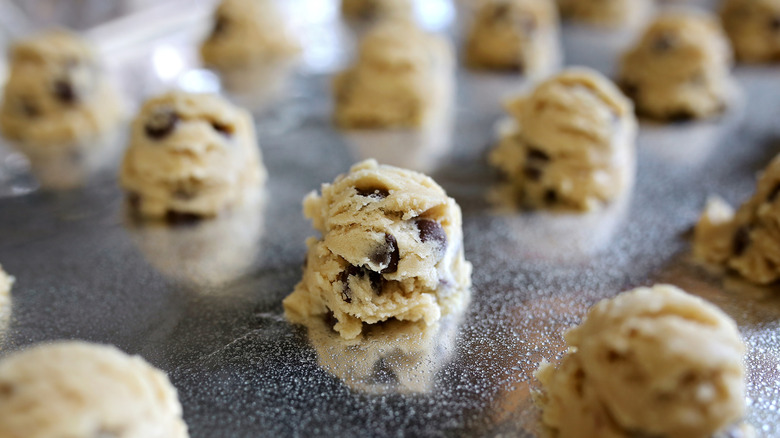Does Banging Your Sheet Pan Really Make Cookies Better?
Frustration just might be the real mother of invention. That's exactly how the sheet pan-slamming technique originated before it swept through the cookie stratosphere. According to cookbook author Sarah Kieffer, who popularized the baking method, the move began with an unsatisfactory batch of cookies that she banged against the oven. The ball of cookie dough then fell into its new disc shape, resulting in a thinner, more balanced cookie. The Big Sheet Pan Bang also caused a literal ripple effect, eventually birthing a number of trending pan-banging recipes that create crusty cookies with rippled edges.
Kieffer's cookie recipes — red velvet, sugar cookies, sesame chocolate chip, ginger molasses, and the internet-famous chocolate chip version — each follow the same oven strategy. Before the cookies are finished baking, the sheet pan is lifted and gently dropped against the oven rack a few times. After that, the cookies are left to finish the rest of their bake time in peace.
What does banging your sheet pan do to cookies?
Sarah Kieffer's pan-slamming process encourages the slightly puffy cookies to spread, and gives the final product layers of texture. The dough deflates, preventing an overly dense middle, and the edges flatten out in a series of crispy ripples, giving you that extra chewy chocolate chip cookie center. Other factors can also have an effect on the final outcome of these wrinkled cookies. Freezing the dough is an important step that keeps the cookies from spreading too much, and a pan lined with aluminum foil results in particularly crunchy cookies.
In Kieffer's recipe, she suggests dropping the pan intermittently every few minutes. But she isn't the first baker to bang a sheet pan with purpose. Before Kieffer's cookies became social media stars, other desserts required a slightly different pan-banging approach. After they're piped and before they're baked, even the most delicate, decadent macarons are dropped in their sheet pan a few times to eliminate any lingering air bubbles in the batter. While the final texture is quite different, both processes allow the baker to coax the dough or batter to spread, without touching it and causing additional marks or dents. You should also drop freshly baked cakes for a smooth, bubble-free bake. Next time you need some excitement in the kitchen, feel free to bang around some pots and pans.

